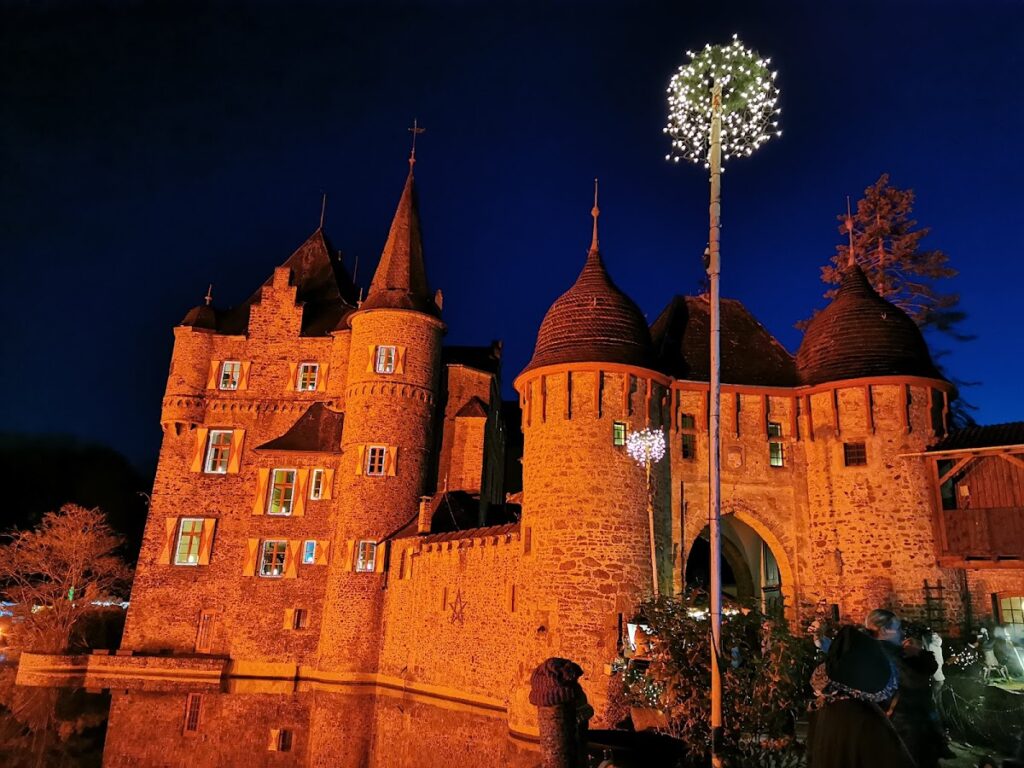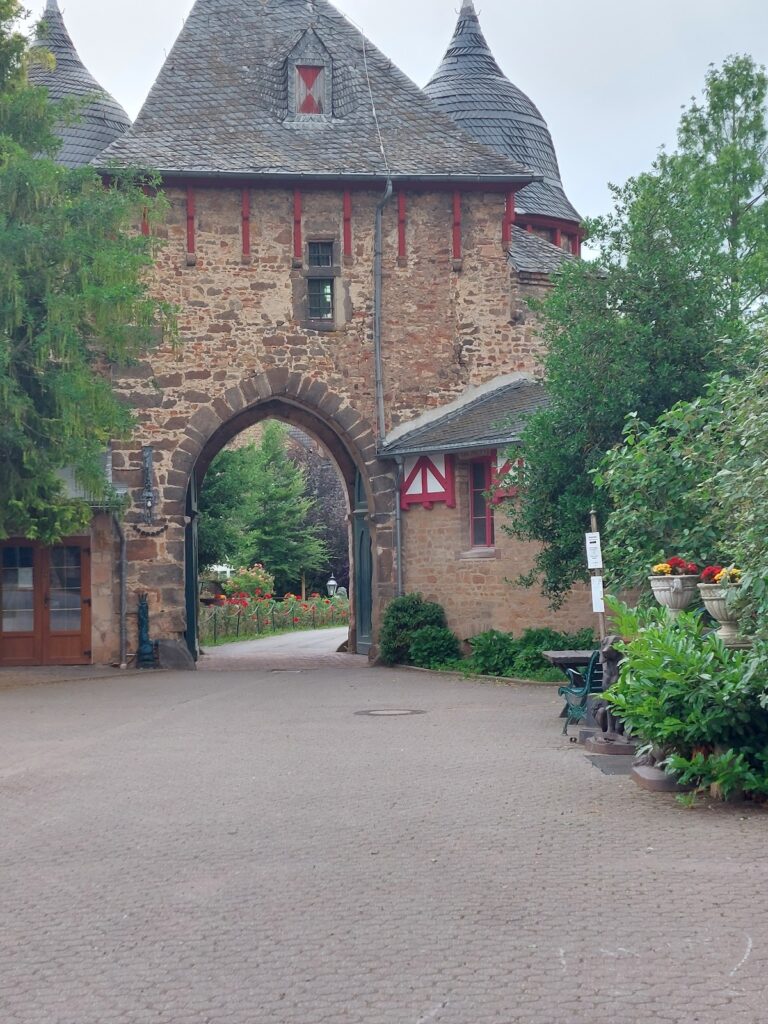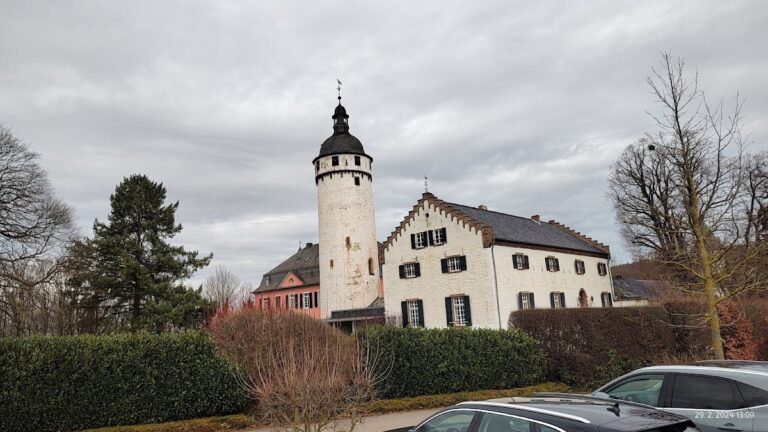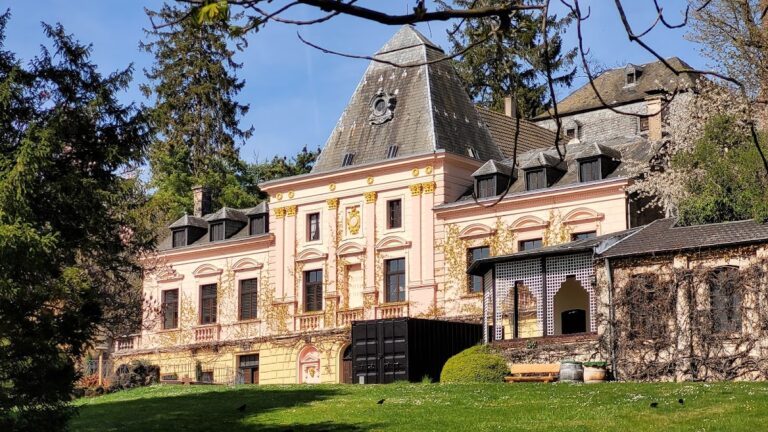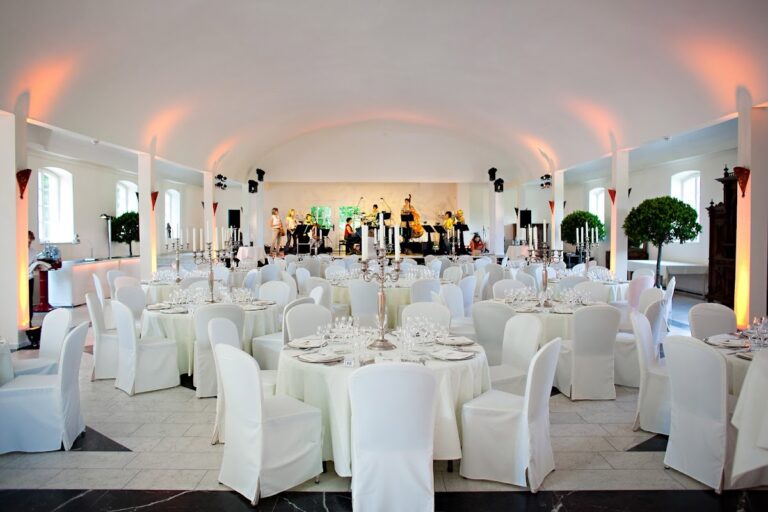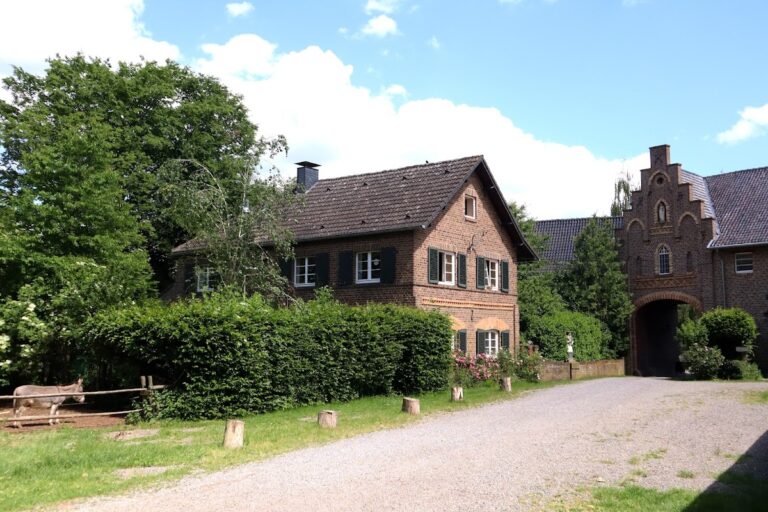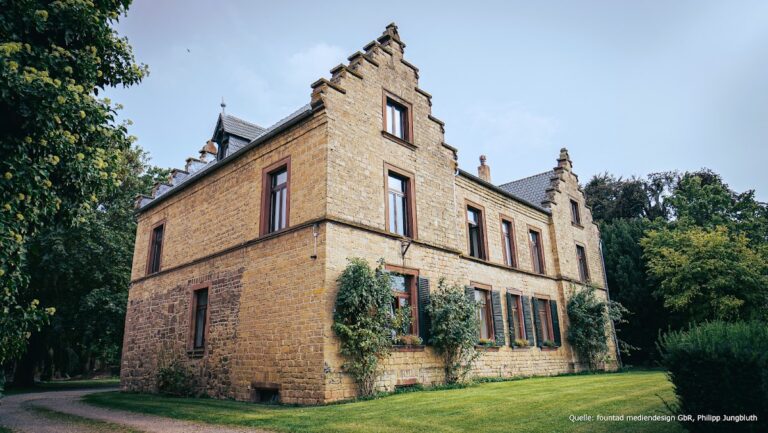Burg Satzvey: A Medieval Water Castle in Mechernich, Germany
Visitor Information
Google Rating: 4.5
Popularity: Medium
Google Maps: View on Google Maps
Official Website: www.burgsatzvey.de
Country: Germany
Civilization: Unclassified
Remains: Military
History
Burg Satzvey is a medieval water castle situated in the municipality of Mechernich in modern-day Germany. It was originally built by local nobility during the 12th century as a fortified manor designed to command and protect surrounding lands in the Eifel region.
The castle first served as the residence of the von Vey family, who acted as vogts—administrative stewards—for church possessions belonging to the Benedictine convent at Dietkirchen. The earliest confirmed record dates to 1368, naming Otto von Vey in this role. When the male von Vey lineage ended, the property passed through marriage in 1391 to Heinrich von Krauthausen. Five years later, in 1396, he erected the first independent two-story Gothic castle house, establishing a new administrative core.
During the 15th century, the castle’s defenses were notably strengthened. A gatehouse featuring twin towers was constructed, accompanied by a zwinger, an outer ward that formed a narrow enclosed space designed to trap attackers between walls. Additionally, a fortified outer bailey—an enclosed courtyard often used for service and defense—was added. Ownership transferred multiple times, with families such as the von Meller holding it until 1512. In 1561, Wilhelm Spies von Büllesheim seized the castle, gaining the support of the Archbishop of Cologne to uphold regional stability.
In 1578, Duke Wilhelm V of Jülich temporarily occupied Burg Satzvey, compelling the lord of the castle to pledge allegiance to both the Duke of Jülich and the Archbishop of Cologne after three years. By the late 16th century, the vogtei (the office of the vogt) attained the status of an immediate imperial lordship, possessing a degree of autonomy under the Holy Roman Empire. In 1747, Karl Otto von Gymnich of the Rhineland nobility acquired the property through purchase.
The castle’s political role diminished after 1794 when it lost its lordship rights and was classified as a knightly estate, carrying limited political influence. In 1882, following the extinction of the Gymnich main family line, ownership transferred to Count Dietrich Wolff-Metternich zur Gracht. He embarked on extensive renovations and expansions that transformed the castle from its medieval ruinous state into a grand residence representing noble status.
Although the castle survived without major conflict damage for centuries, World War II inflicted severe harm on its structure. In 1942, Countess Adeline Wolff Metternich inherited the property and married Franz Josef Count Beissel von Gymnich in 1944, bringing the estate into the Beissel von Gymnich family. This family undertook important restoration efforts on the damaged sections.
Since 1977, Franz Josef Count Beissel von Gymnich has owned Burg Satzvey. Under his stewardship, the castle was opened to the public and began hosting historical events, particularly knightly tournaments from 1981 onward, attracting international attention. The castle stands as a well-preserved example of a Rhineland water castle, retaining much of its original fabric and reflecting noble lifestyle and architecture over several centuries.
Remains
Burg Satzvey is a typical example of a lowland water castle, constructed strategically on two islands encircled by water-filled moats supplied by the nearby Veybach stream. This design compensated for the lack of natural hill defenses common to highland fortresses. The main island, more heavily fortified, hosts the primary castle structures, while the second island contains an outer bailey that served both defensive and service functions.
The oldest surviving element of the castle dates from the early 15th century and includes the original castle house, which still stands as a two-story Gothic structure. Alongside this, a distinctive gatehouse with twin towers endures from the same period. This gatehouse serves as the imposing entrance to the castle and features a stone arch above the doorway bearing the coat of arms of the Wolff-Metternich zur Gracht family, highlighting later associations.
Additional medieval defensive constructions include a northern wall and a northern tower that have remained largely intact for around six centuries. The presence of a zwinger—the enclosed outer ward between walls designed to expose attackers to defensive fire—further defines the castle’s medieval military architecture.
In the late 19th century, Count Dietrich Wolff-Metternich implemented significant renovations aimed at restoring and enhancing the castle’s residence function. These works included drying out the original moats, a complex process that altered the surrounding water defenses. He expanded the castle house by adding new wings and towers, creating a more representative noble home. On the grounds of the former outer bailey, buildings were constructed in the style reminiscent of English stables, reflecting 19th-century tastes and functions. A manor farm with various agricultural buildings was also established, emphasizing the estate’s economic self-sufficiency.
One of the southwest economic buildings bears a dated alliance coat of arms, marking the union of Dietrich Wolff-Metternich zur Gracht and his wife Mechtildis Berghe von Trips in 1882, symbolizing both family lineage and property heritage.
Today, the castle complex includes a courtyard equipped with medieval-style features, which contribute to its historical ambiance. The park surrounding the castle contains stables that continue to accommodate horses, sustaining the traditional equestrian element associated with noble estates.
After sustaining heavy damage during the Second World War, the Beissel von Gymnich family undertook the restoration of key structural components, successfully preserving the castle’s historical integrity.
Within the estate, accommodations are offered in the bel étage—meaning the main floor of the castle house known for its higher ceilings and elegant rooms—and in nearby estate houses. Outdoor camping areas are also available on site, maintaining a connection to the castle’s open grounds and residence history.
A notable feature near the gatehouse includes two diamond-shaped memorial shields. These plaques commemorate Adeline Helene Huberta Maria Countess Beissel von Gymnich, née Wolff-Metternich, and her husband Franz Josef Count Beissel von Gymnich, honoring their roles in the castle’s recent history and preservation.
Burg Satzvey remains a well-preserved example of a medieval water castle, with its layout, surviving fortifications, and later adaptations reflecting centuries of noble residence, defense, and estate management.

